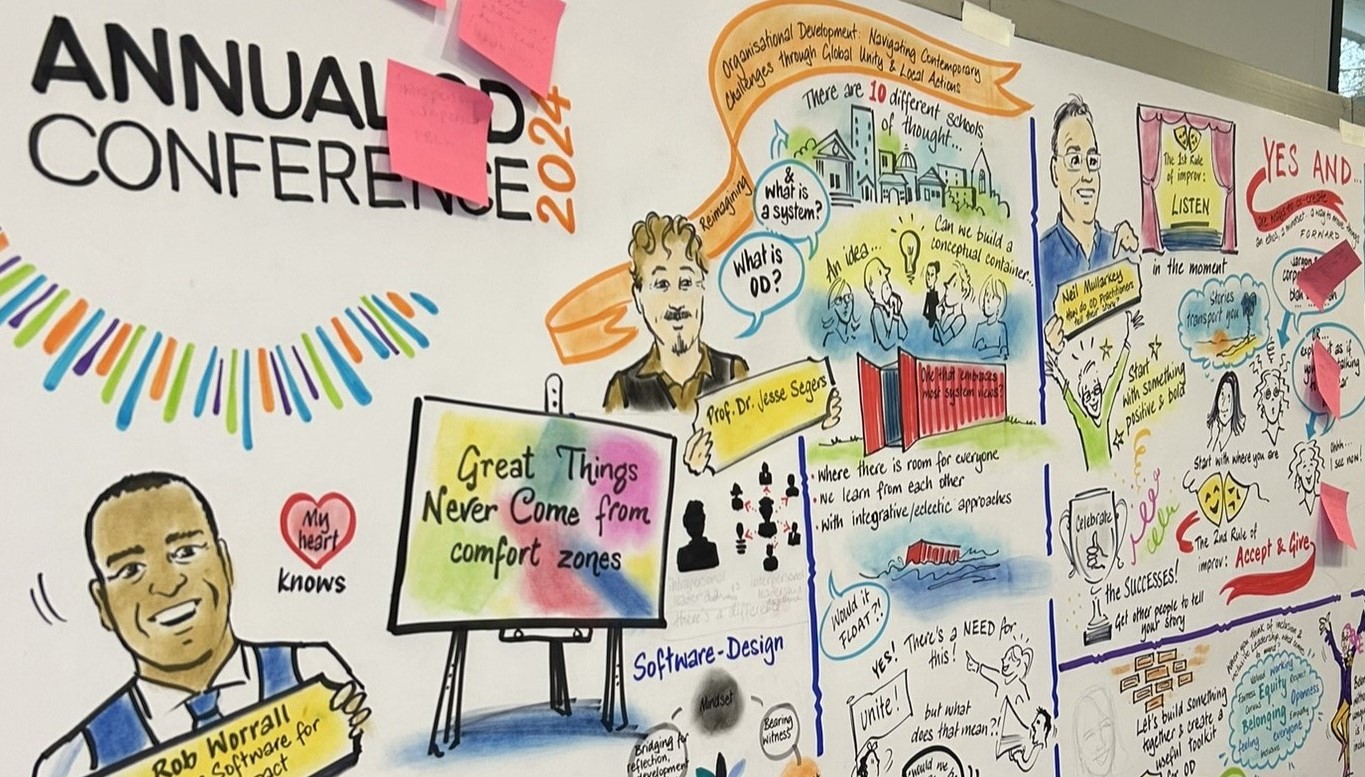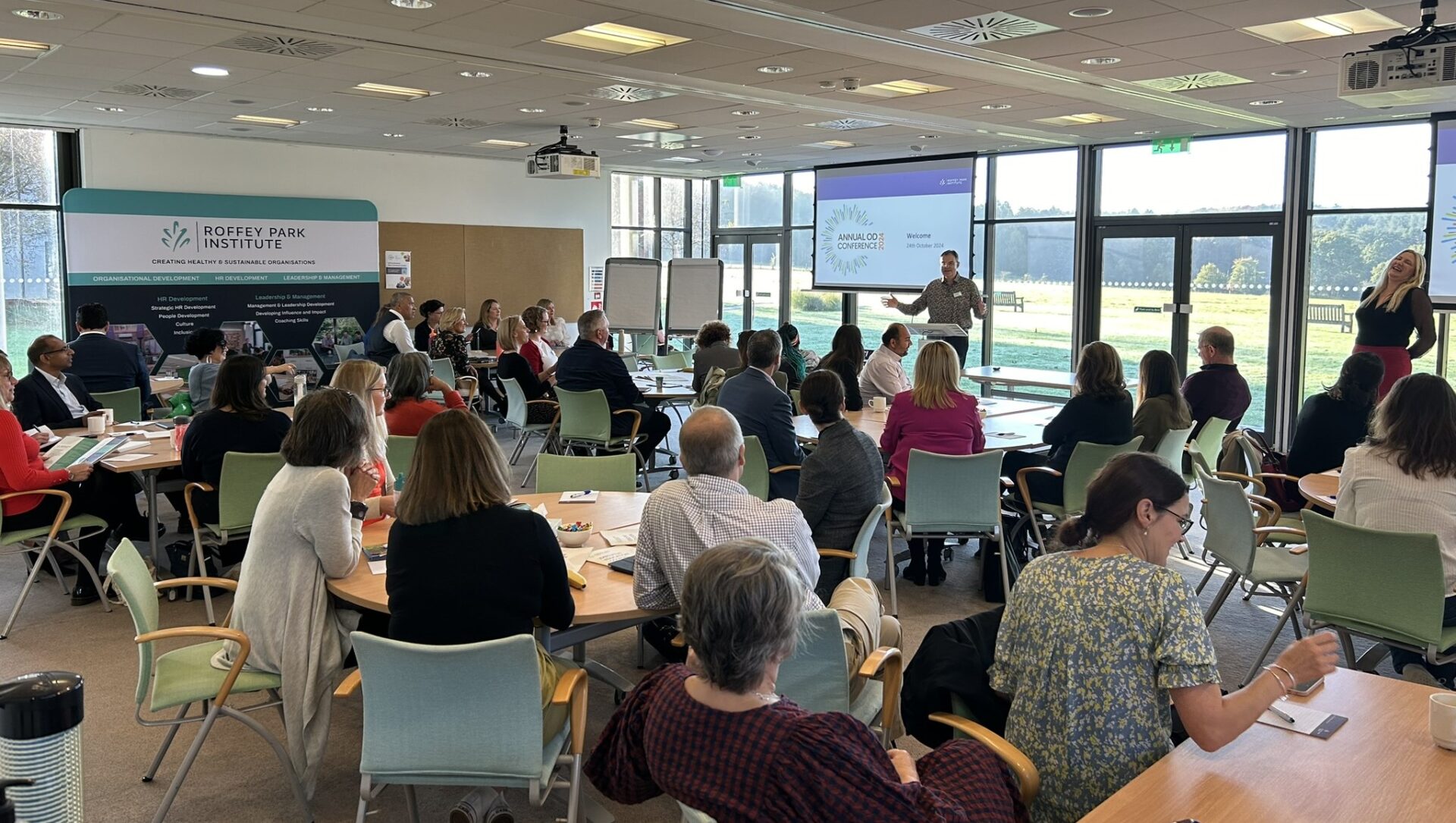Graham Curtis ran a fascinating session at Roffey Park Institute’s annual OD Conference not long ago where he spoke about complexity theory and what that means in organisational practice. He joined us post-conference to explain it further.
Complexity theory emerged in the early 90s with the use of computer simulations and entities within a computer programme. These entities, which were called boids, were given the same three rules to follow:
- Separation: steer to avoid crowding other boids.
- Alignment: steer toward the average heading of other local boids.
- Cohesion: steer to move toward the average position (centre of mass) of local boids.
Following these rules caused the boids to produce a flocking pattern that resembled Starling murmurations. In taking up this patterning as an analogy for organisational studies and how people in organisations relate to each other to form patterns, it is noteworthy that such patterns emerge without any outside plan. In the computer programme, the pattern emerged from the interaction between the entities without anyone planning what the pattern would look like.

In a later, different simulation, entities in a computer programme were each given different instructions. This meant that that they were heterogeneous, and created different rules for themselves through interacting and responding to other entities. The patterning in this simulation became highly unpredictable over time.
This shift in the pattern occurred due to competition between entities and the subsequent extinction of some. Some entities disappeared whilst others expanded, some became different and much stronger and some new entities emerged.
“It is the findings of these simulations that are used by organisational development practitioners as an analogy for how people work together in organisations. When people are interacting together, unplanned patterns emerge over time that can be highly unpredictable.” – Graham Curtis.
The history of complexity in organisational studies
We now have what are, essentially, two schools of thought on complexity in organisational studies. One school of thought, with key thinkers like Dave Snowden and Margaret Wheatley, works with an idea called complex adaptive systems. The idea is that organisations are systems and that patterns emerge between heterogeneous actors – people in the organisation – and that their interactions can be more or less complex.
This led to the idea that managers and leaders and/or organisational development or change practitioners can intervene in the system in ways that reduce or increase the complexity. The idea is that a person can harness the emergence of a pattern and intervene in it to shift it in certain ways. For example, in the conversations you have, the actions you take or the policies you create.
The other school of thought is called complex responsive processes of relating which emerged from the work of Ralph Stacey, Douglas Griffin and Patricia Shaw. They challenged some of the assumptions that are held by those taking a systems perspective because organisations are not really bounded systems. They argued that whilst we can think of organisation ‘as if’ they are systems, it can only ever be as an imaginative concept.

The process perspective takes the position that systems are limited metaphors and that they often mask the power dynamics that emerge between people within organisations. Some individuals are more powerful than others in that they can influence what other people are able to do. Additionally, people are forming and being formed by their interaction with others. So, there is no ability to be outside of the system. If you’re interacting with others, you’re inevitably involved and you’re affecting and having an impact on the people around you, and they on you. Taking a process perspective is about reflecting on what is going on around us and how we are playing a part in forming the relational patterns that are emerging. The work then is to help others also notice those patterns (such patterns often emerge outside of our awareness) and to support discussions as to whether they are desirable or not.
In terms of organisational culture, a systems perspective gives you the idea of culture as something separate from the interactions between people that can be worked on with tools, techniques and models, whilst a process perspective suggests that culture is global patterning emerging from local interaction over time. This global patterning then affects ongoing local interaction.
A systems or process perspective?
Opinions about these perspectives differ. Some people believe that organisations can be defined as systems, some do not. Both ways of thinking may be helpful in certain situations. For example, thinking in systems terms allows you to put a boundary around, and sometimes simplify things. However, when we think about organisations as systems, we can slip into simple language like ‘the organisation decided to’ and we cover the power dynamics and interactions which resulted in that decision.
The power dynamics of interacting in organisations create their culture. If we view organisations as unified systems of interrelated parts, we can miss out on the agency of individuals in how things play out.





